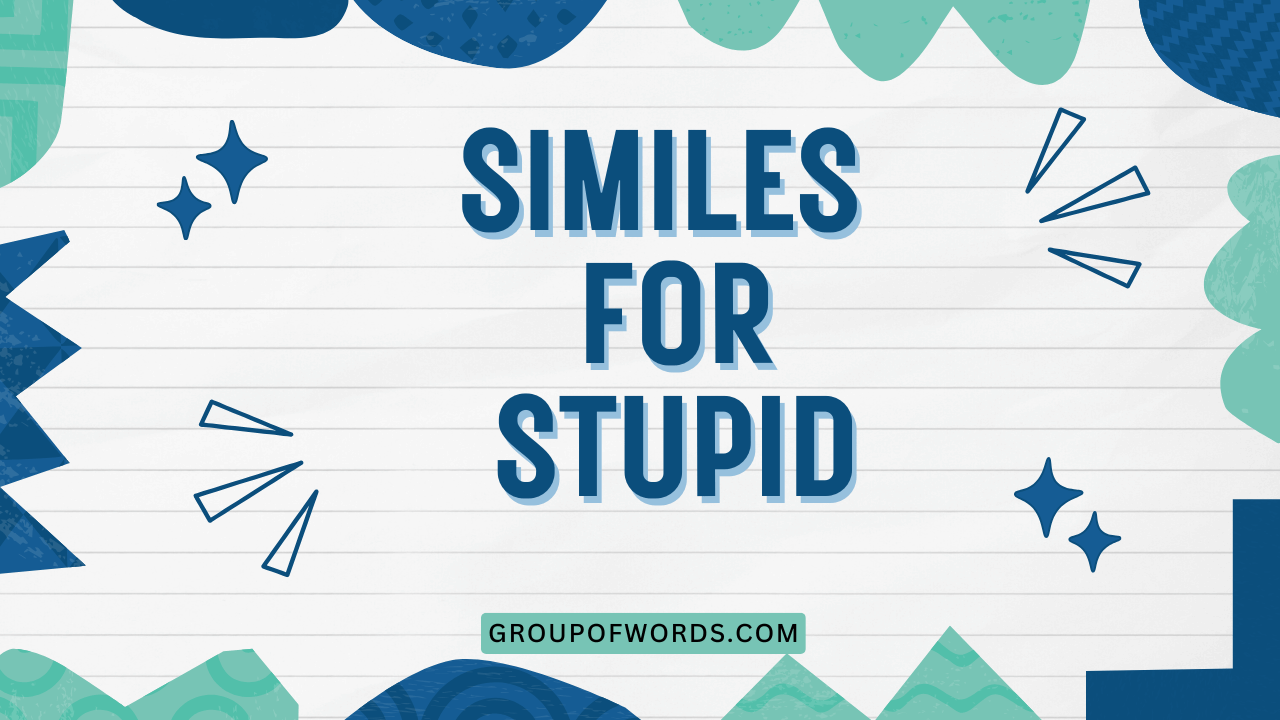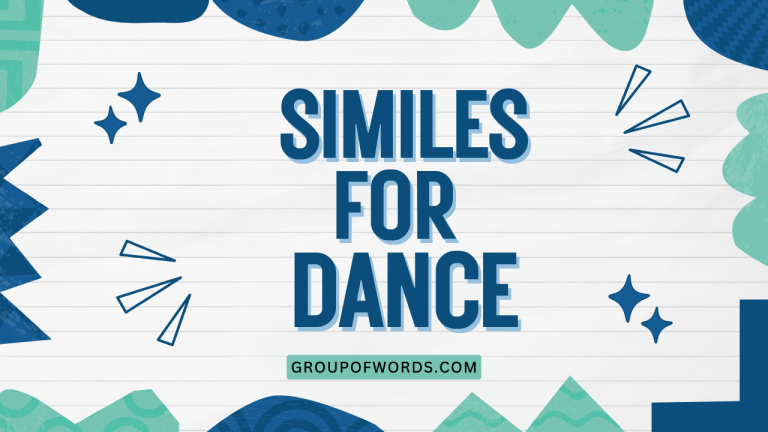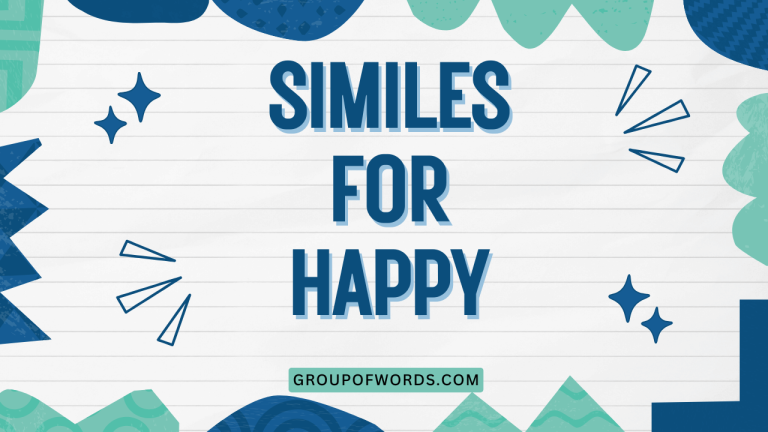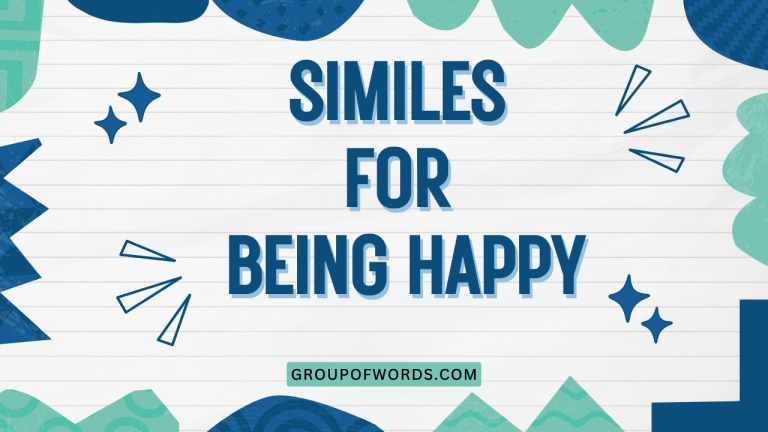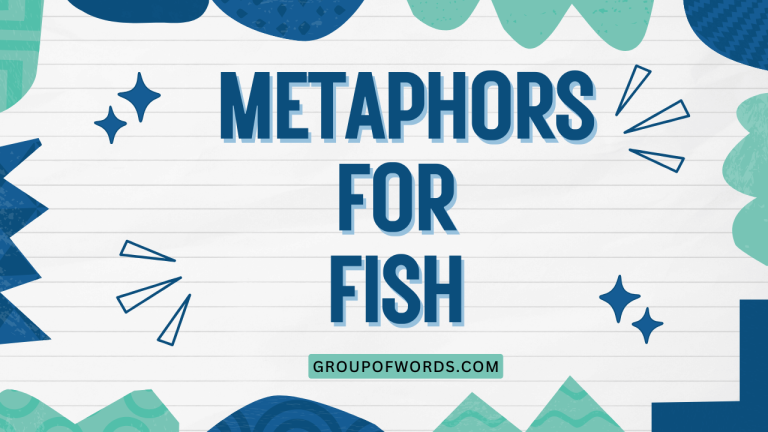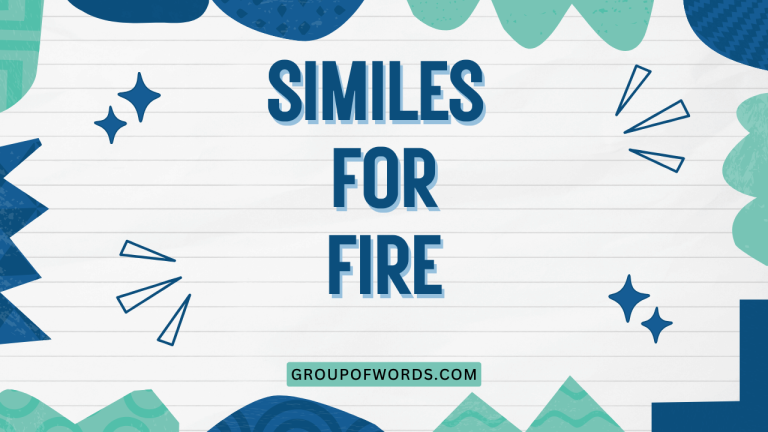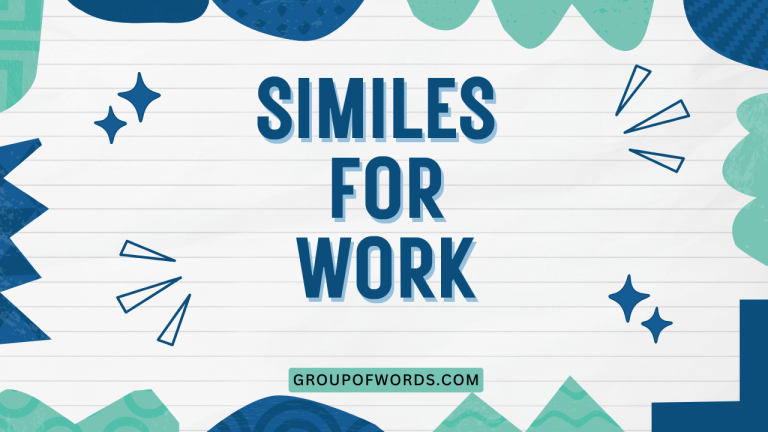Similes for Stupid: Enhancing Your English Vocabulary
Similes are powerful tools in the English language, allowing us to create vivid comparisons and add depth to our descriptions. Exploring similes for “stupid” not only expands your vocabulary but also enhances your ability to express nuance and humor.
This article delves into the world of similes used to describe a lack of intelligence, providing definitions, examples, usage rules, and practical exercises. Whether you are an English language learner or a seasoned writer, this guide will equip you with the knowledge to use these similes effectively and appropriately.
This comprehensive guide is designed for English language learners, writers, and anyone interested in enhancing their descriptive vocabulary. By understanding the nuances of these similes, you can improve your communication skills and add color to your writing.
Table of Contents
- Definition of Similes for Stupid
- Structural Breakdown of Similes
- Types and Categories of Similes for Stupid
- Examples of Similes for Stupid
- Usage Rules for Similes
- Common Mistakes When Using Similes
- Practice Exercises
- Advanced Topics: Nuance and Context
- Frequently Asked Questions
- Conclusion
Definition of Similes for Stupid
A simile is a figure of speech that compares two unlike things using “like” or “as.” Similes help to create a more vivid and relatable image in the reader’s or listener’s mind. When we talk about similes for “stupid,” we are referring to comparisons that highlight a lack of intelligence, understanding, or common sense.
The function of these similes is to add color and emphasis to the description of someone’s lack of intelligence. They can range from humorous to harsh, depending on the context and the specific simile used.
Understanding the nuances of each simile is crucial for using them effectively and appropriately. The context of the situation and the relationship with the person being described are important factors to consider before using such similes.
Similes for stupid are frequently used in informal conversation, literature, and humor. They can be found in everyday speech, novels, movies, and stand-up comedy routines.
The effectiveness of a simile lies in its ability to create a memorable and impactful image.
Structural Breakdown of Similes
The basic structure of a simile is straightforward: it consists of two elements being compared, connected by “like” or “as.” The general formula is:
A + like/as + B
Where:
- A is the subject being described (e.g., the person who is stupid).
- like/as is the connecting word.
- B is the object or concept to which the subject is being compared (e.g., a doorknob).
For example: “He is as dumb as a doorknob.” Here, “he” is being compared to “a doorknob” using “as” to highlight his lack of intelligence.
Another example: “She’s like a deer in headlights.” In this case, “she” is compared to “a deer in headlights” using “like” to illustrate her confusion or lack of understanding.
Understanding this basic structure is key to both recognizing and creating effective similes. It allows you to analyze how comparisons are being made and to craft your own similes to suit specific situations.
Types and Categories of Similes for Stupid
Similes for “stupid” can be categorized based on the imagery they evoke and the degree of harshness or humor they convey. Here are a few categories:
Animal-Based Similes
These similes compare someone’s intelligence to that of an animal, often one perceived as unintelligent.
Inanimate Object-Based Similes
These similes use inanimate objects to highlight a lack of intelligence or understanding.
Food-Based Similes
These similes use food items to suggest a lack of intelligence or knowledge.
Abstract Concept-Based Similes
These similes compare someone’s intelligence to abstract concepts or situations.
Humorous Similes
These similes are intended to be funny and often exaggerate the lack of intelligence.
Examples of Similes for Stupid
Here are some examples of similes for “stupid,” categorized for clarity and understanding.
Animal-Based Similes Examples
This table showcases similes using animals to describe stupidity. These comparisons draw on common perceptions of animal intelligence, or lack thereof, to create a vivid image of foolishness.
| Simile | Explanation |
|---|---|
| As dumb as an ox | Oxen are often perceived as strong but not particularly intelligent. |
| As silly as a goose | Geese are sometimes seen as foolish or easily confused. |
| As daft as a brush | A brush is a simple, unthinking tool. |
| As thick as two short planks | Implies a lack of mental depth or understanding. |
| As dense as a brick | Bricks are solid and unyielding, suggesting a lack of mental flexibility. |
| As empty as a drum | Suggests a lack of substance or intelligence. |
| As blank as a sheet of paper | Implies a complete lack of knowledge or ideas. |
| As wooden as a plank | Suggests a lack of responsiveness or understanding. |
| As slow as a snail | Snails are known for their slow pace, implying slow thinking. |
| As clueless as a newborn | Newborns lack knowledge and understanding of the world. |
| As lost as a sheep in the city | Sheep are easily disoriented, suggesting confusion and lack of direction. |
| As bird-brained as a chicken | Chickens are often considered unintelligent. |
| As thick as a whale omelet | Implies a significant lack of intelligence. |
| As slow as molasses in January | Molasses moves very slowly in cold temperatures. |
| As nutty as a fruitcake | Fruitcake is often seen as odd or eccentric. |
| As sharp as a marble | Marbles are round and smooth, not sharp, implying a lack of intelligence. |
| As bright as a black hole | A black hole absorbs light, implying a lack of intelligence. |
| As useful as a screen door on a submarine | Screen doors are useless underwater. |
| As sharp as a spoon | A spoon is not sharp, suggesting a lack of intelligence. |
| As smart as dirt | Dirt is considered unintelligent. |
| As bright as a burnt-out bulb | A burnt-out bulb provides no light, implying a lack of intelligence. |
| As graceful as a cow on ice | Cows are not known for their grace, especially on ice. |
| As deep as a puddle | Puddles are shallow, implying a lack of depth of thought. |
| As quick as continental drift | Continental drift is a very slow process. |
| As sharp as a bowling ball | Bowling balls are round and heavy, not sharp. |
Inanimate Object-Based Similes Examples
This table presents similes that use inanimate objects to describe someone’s lack of intelligence. These comparisons often highlight the simplicity or uselessness of the object in question.
| Simile | Explanation |
|---|---|
| As dumb as a doorknob | Doorknobs are simple, unthinking objects. |
| As thick as a brick | Bricks are solid and dense, implying a lack of intelligence. |
| As bright as a blackout | A blackout is the absence of light, implying a lack of intelligence. |
| As sharp as a butter knife | Butter knives are dull, suggesting a lack of mental sharpness. |
| As useful as a chocolate teapot | A chocolate teapot would melt and be useless. |
| As helpful as a broken umbrella | A broken umbrella provides no protection from the rain. |
| As clear as mud | Mud is opaque and unclear, implying confusion. |
| As sharp as a rubber ball | Rubber balls are round and bouncy, not sharp. |
| As bright as a dim bulb | A dim bulb provides very little light, suggesting limited intelligence. |
| As smart as a rock | Rocks are considered unintelligent. |
| As deep as a kiddie pool | Kiddie pools are shallow, implying a lack of depth of thought. |
| As quick as a glacier | Glaciers move very slowly. |
| As sharp as a marble | Marbles are round and smooth, not sharp. |
| As bright as a black hole | Black holes absorb light, implying a lack of intelligence. |
| As useful as a screen door on a submarine | Screen doors are useless underwater. |
| As sharp as a spoon | A spoon is not sharp, suggesting a lack of intelligence. |
| As smart as dirt | Dirt is considered unintelligent. |
| As bright as a burnt-out bulb | A burnt-out bulb provides no light, implying a lack of intelligence. |
| As graceful as a cow on ice | Cows are not known for their grace, especially on ice. |
| As deep as a puddle | Puddles are shallow, implying a lack of depth of thought. |
| As quick as continental drift | Continental drift is a very slow process. |
| As sharp as a bowling ball | Bowling balls are round and heavy, not sharp. |
| As complex as tic-tac-toe | Tic-tac-toe is a very simple game. |
| As original as a photocopy | Photocopies are duplicates, not original. |
| As sensitive as a brick wall | Brick walls are not sensitive. |
Food-Based Similes Examples
This table lists similes that use food items to denote stupidity. These comparisons often play on the idea of something being bland, mushy, or lacking in substance.
| Simile | Explanation |
|---|---|
| As dense as pudding | Pudding is soft and lacks density, implying a lack of mental sharpness. |
| As sharp as a grape | Grapes are round and soft, not sharp. |
| As bright as a day-old donut | Day-old donuts are stale and not appealing. |
| As smart as a bag of hammers | Hammers are tools, not intelligent beings. |
| As exciting as watching paint dry | Watching paint dry is notoriously boring. |
| As thrilling as watching grass grow | Watching grass grow is a slow and uneventful process. |
| As interesting as a blank wall | Blank walls are devoid of interest. |
| As fun as a root canal | Root canals are painful and unpleasant. |
| As relaxing as a tax audit | Tax audits are stressful and anxiety-inducing. |
| As organized as a tornado | Tornados are chaotic and destructive. |
| As patient as a hungry wolf | Hungry wolves are not patient. |
| As subtle as a freight train | Freight trains are loud and obvious, not subtle. |
| As graceful as a bull in a china shop | Bulls are clumsy and destructive in delicate environments. |
| As smooth as sandpaper | Sandpaper is rough, not smooth. |
| As sharp as a grape | Grapes are round and soft, not sharp. |
| As bright as a day-old donut | Day-old donuts are stale and not appealing. |
| As smart as a bag of hammers | Hammers are tools, not intelligent beings. |
| As exciting as watching paint dry | Watching paint dry is notoriously boring. |
| As thrilling as watching grass grow | Watching grass grow is a slow and uneventful process. |
| As interesting as a blank wall | Blank walls are devoid of interest. |
| As fun as a root canal | Root canals are painful and unpleasant. |
| As relaxing as a tax audit | Tax audits are stressful and anxiety-inducing. |
| As organized as a tornado | Tornados are chaotic and destructive. |
| As patient as a hungry wolf | Hungry wolves are not patient. |
| As subtle as a freight train | Freight trains are loud and obvious, not subtle. |
Abstract Concept-Based Similes Examples
This table provides similes that use abstract concepts or situations to describe a lack of intelligence. These comparisons often rely on irony or absurdity to highlight foolishness.
| Simile | Explanation |
|---|---|
| As useful as a ladder in a snake pit | Ladders are useless in a snake pit and would likely make the situation worse. |
| As relevant as a rotary phone in 2024 | Rotary phones are outdated and irrelevant in modern times. |
| As necessary as a snowplow in the desert | Snowplows are unnecessary in the desert climate. |
| As helpful as a parachute in a submarine | Parachutes are useless underwater. |
| As welcome as a skunk at a garden party | Skunks are unwanted and unpleasant at social gatherings. |
| As popular as a porcupine in a balloon factory | Porcupines would cause chaos in a balloon factory. |
| As wanted as a mosquito at a blood bank | Mosquitoes are pests, even at a blood bank. |
| As welcome as a rattlesnake in a nursery | Rattlesnakes are dangerous and unwelcome around children. |
| As useful as a ladder in a snake pit | Ladders are useless in a snake pit and would likely make the situation worse. |
| As relevant as a rotary phone in 2024 | Rotary phones are outdated and irrelevant in modern times. |
| As necessary as a snowplow in the desert | Snowplows are unnecessary in the desert climate. |
| As helpful as a parachute in a submarine | Parachutes are useless underwater. |
| As welcome as a skunk at a garden party | Skunks are unwanted and unpleasant at social gatherings. |
| As popular as a porcupine in a balloon factory | Porcupines would cause chaos in a balloon factory. |
| As wanted as a mosquito at a blood bank | Mosquitoes are pests, even at a blood bank. |
| As welcome as a rattlesnake in a nursery | Rattlesnakes are dangerous and unwelcome around children. |
| As soothing as fingernails on a chalkboard | The sound is grating and unpleasant, the opposite of soothing. |
| As refreshing as a mouthful of sand | Sand is gritty and unpleasant in the mouth, the opposite of refreshing. |
| As comfortable as a bed of nails | A bed of nails is extremely uncomfortable. |
| As quiet as a rock concert | Rock concerts are loud, not quiet. |
| As relaxing as running a marathon | Running a marathon is strenuous, not relaxing. |
| As stable as a house of cards in a hurricane | A house of cards is inherently unstable, especially in a hurricane. |
| As smooth as a gravel road | Gravel roads are bumpy, not smooth. |
Usage Rules for Similes
Using similes effectively requires understanding the rules that govern their construction and application. Here are some key rules to keep in mind:
- Use “like” or “as”: Similes must use either “like” or “as” to make the comparison.
- Compare unlike things: The two things being compared should be different enough to make the comparison interesting and insightful.
- Ensure clarity: The comparison should be clear and understandable to the audience. Avoid obscure or overly complex references.
- Consider context: The appropriateness of a simile depends on the context and the audience. Some similes may be offensive or inappropriate in certain situations.
- Avoid clichés: While some common similes are effective, overuse can make your writing seem unoriginal. Try to create fresh and unique comparisons.
For example, saying “He is as strong as an ox” is a common and understandable simile. However, saying “He is as strong as a quark-gluon plasma” might be confusing to many people because it refers to a complex scientific concept.
It’s also important to consider the tone and purpose of your writing. A humorous simile might be appropriate in a lighthearted context, but not in a serious or formal setting.
Always be mindful of your audience and the message you are trying to convey.
Common Mistakes When Using Similes
Even experienced writers sometimes make mistakes when using similes. Here are some common errors to watch out for:
- Using metaphors instead of similes: Metaphors state that something *is* something else, while similes compare them using “like” or “as.”
- Creating unclear comparisons: If the comparison is too vague or obscure, the simile will not be effective.
- Using clichés: Overused similes can make your writing seem uninspired.
- Being insensitive or offensive: Some comparisons can be hurtful or inappropriate.
Here are some examples of correct and incorrect usage:
| Incorrect | Correct | Explanation |
|---|---|---|
| He is an ox. (Metaphor) | He is as strong as an ox. (Simile) | The first sentence is a metaphor, stating he *is* an ox. The second uses “as” to compare his strength to that of an ox. |
| She is like the color of Tuesday. (Unclear) | She is like a ray of sunshine. (Clear) | The first comparison is vague and doesn’t create a clear image. The second creates a clear and positive image. |
| He is as brave as a lion. (Cliché) | He is as brave as a firefighter running into a burning building. (Original) | The first simile is overused. The second is more specific and creates a stronger image. |
| He is as stupid as a person with disabilities. (Insensitive) | He is as clueless as a newborn. (Appropriate) | The first simile is offensive. The second is more neutral and less likely to offend. |
Practice Exercises
Test your understanding of similes for “stupid” with these exercises. Choose the best simile to complete each sentence.
Exercise 1: Fill in the Blanks
Complete the following sentences with the most appropriate simile from the options provided.
| Question | Options | Answer |
|---|---|---|
| 1. He’s ______ when it comes to technology. | a) as sharp as a tack, b) as clueless as a newborn, c) as quick as a computer | b) as clueless as a newborn |
| 2. She’s ______ in her decision-making. | a) as clear as mud, b) as bright as the sun, c) as steady as a rock | a) as clear as mud |
| 3. His ideas are ______. | a) as fresh as a daisy, b) as old as time, c) as dense as pudding | c) as dense as pudding |
| 4. Trying to explain it to him is ______. | a) as easy as pie, b) as hard as rocket science, c) as simple as ABC | b) as hard as rocket science |
| 5. He’s ______ when it comes to common sense. | a) as wise as an owl, b) as silly as a goose, c) as grounded as a tree | b) as silly as a goose |
| 6. The instructions were ______. | a) as straightforward as a line, b) as twisted as a pretzel, c) as clear as crystal | b) as twisted as a pretzel |
| 7. He’s ______ in understanding social cues. | a) as smooth as silk, b) as awkward as a penguin, c) as graceful as a swan | b) as awkward as a penguin |
| 8. Her knowledge of the subject is ______. | a) as deep as the ocean, b) as shallow as a puddle, c) as vast as the universe | b) as shallow as a puddle |
| 9. He’s ______ when it comes to remembering names. | a) as forgetful as a sieve, b) as sharp as a knife, c) as reliable as a clock | a) as forgetful as a sieve |
| 10. The plan was ______. | a) as solid as a rock, b) as flimsy as a house of cards, c) as brilliant as a diamond | b) as flimsy as a house of cards |
Exercise 2: Create Your Own Similes
Create your own similes for “stupid” based on the following prompts.
| Prompt | Your Simile |
|---|---|
| 1. Describe someone who always makes foolish decisions. | As smart as a bag of hammers. |
| 2. Describe someone who is easily confused. | As lost as a sheep in the city. |
| 3. Describe someone who lacks common sense. | As useful as a screen door on a submarine. |
| 4. Describe someone who is slow to understand things. | As slow as molasses in January. |
| 5. Describe someone who is completely clueless. | As bright as a black hole. |
| 6. Describe someone who is slow to understand things. | As slow as molasses in January. |
| 7. Describe someone who is completely clueless. | As bright as a black hole. |
| 8. Describe someone who is slow to understand things. | As slow as molasses in January. |
| 9. Describe someone who is completely clueless. | As bright as a black hole. |
| 10. Describe someone who is slow to understand things. | As slow as molasses in January. |
Advanced Topics: Nuance and Context
Beyond the basics, mastering similes involves understanding nuance and context. The same simile can have different effects depending on how it’s used.
For example, “as dumb as a doorknob” can be a lighthearted jab between friends, but it could be offensive if used in a professional setting or directed at someone you don’t know well.
Consider the tone you want to convey. Are you trying to be humorous, critical, or simply descriptive? The choice of simile should reflect your intended tone. Also, think about the audience. What might be funny to one group of people could be offensive to another. If you are unsure, it’s always best to err on the side of caution.
Cultural context also plays a role. Some similes may be specific to certain cultures or regions, and their meaning may not be immediately clear to everyone. Be mindful of your audience’s background and choose similes that are likely to be understood and appreciated.
Frequently Asked Questions
Here are some frequently asked questions about similes for “stupid.”
- What is the difference between a simile and a metaphor?
A simile compares two unlike things using “like” or “as,” while a metaphor states that one thing *is* another. For example, “He is like a rock” is a simile, while “He is a rock” is a metaphor.
- Are similes for “stupid” always negative?
Yes, similes for “stupid” are inherently negative as they are used to describe a lack of intelligence or understanding. However, the degree of negativity can vary depending on the specific simile and the context in which it is used. Some similes may be humorous or lighthearted, while others may be more critical or harsh.
- Can I create my own similes?
Absolutely! Creating your own similes is a great way to add originality and creativity to your writing. Just make sure the comparison is clear, understandable, and appropriate for the context.
- How can I avoid using clichés?
To avoid clichés, try to think of fresh and unique comparisons. Instead of relying on overused similes, brainstorm specific images or ideas that relate to the concept you are trying to describe. The more specific and original your comparison, the more effective it will be.
- Is it ever appropriate to use offensive similes?
Generally, it’s best to avoid using offensive similes, especially in formal or professional settings. However, in certain contexts, such as satire or dark humor, offensive similes may be used intentionally for comedic effect. However, it’s important to be aware of the potential consequences and to use such similes with caution.
- What makes a simile effective?
An effective simile creates a vivid and memorable image in the reader’s mind, enhances the description, and adds depth to the writing. It should be clear, understandable, and appropriate for the context and audience. The comparison should be insightful and thought-provoking, rather than simply stating the obvious.
- How do I choose the right simile for a particular situation?
Consider the tone you want to convey, the audience you are writing for, and the message you are trying to communicate. Choose a simile that is appropriate for the context and that accurately reflects the level of intelligence or understanding you are describing. Be mindful of cultural differences and potential sensitivities.
- Can similes be used in formal writing?
Yes, similes can be used in formal writing, but they should be used sparingly and with careful consideration. In formal writing, it’s important to maintain a professional and objective tone, so avoid using similes that are too casual, humorous, or offensive. Choose similes that are sophisticated and insightful, and that enhance the clarity and precision of your writing.
Conclusion
Understanding and using similes effectively can greatly enhance your English language skills. By exploring similes for “stupid,” you not only expand your vocabulary but also develop a deeper appreciation for the nuances of language and the power of comparison.
Remember to use similes judiciously, considering the context, audience, and intended tone. With practice and attention to detail, you can master the art of using similes to create vivid and impactful descriptions.
The key takeaways from this guide are the importance of understanding the structure of similes, the various categories they fall into, and the rules that govern their usage. By avoiding common mistakes and practicing regularly, you can become more confident and skilled in using similes to express yourself effectively.
Keep exploring, experimenting, and refining your understanding of similes, and you will continue to grow as a writer and communicator.
